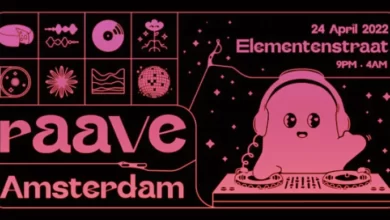DeFi Supporters Are In An Info Bubble, CeFi Is Still Essential

The External Communications Manager at Drofa Comms, Masha Balanovich, believes that DeFi and CeFi should remain friends for a little longer.
Payment, trading, investing, and other financial services have moved to a decentralized environment. But are those interested in blockchain technology and decentralized finance (DeFi) in an information bubble?
These supporters believe that DeFi will soon be widely adopted. That might not be the case, though, as DeFi is still in its early stages, and some essential components must be in place before it can achieve mass adoption. Notably, the number of DeFi customers is increasing yearly, although they still represent a small portion of the centralized finance (CeFi) market. In July 2022, there were only roughly 5 million DeFi customers.
The three primary reasons why the general market has not yet adopted DeFi are listed below.
Sought-For Global Regulatory Framework
Various governments have recently reacted to the cryptocurrency market and tried to control it. Nadhim Zahawi, the Chancellor of the Exchequer at the time, tabled the Financial Service and Market Bill in July 2022, which regulates stablecoins and crypto assets. A legal framework for digital assets is the focus of recent US legislation like Lummis-Gillibrand, introduced in June 2022, and Boozman-Stabenow, presented in August 2022.
However, no international rules currently govern how blockchain technology or DeFi functions as a whole. DeFi systems can undoubtedly exist in the current laissez-faire environment, but restrictions are a technology’s success driver. First, it may quickly increase public confidence, affecting institutional and retail adoption. Second, laws may spark DeFi breakthroughs in addition to preserving the public interest. According to a 2022 survey by the Economist, 27% of respondents see government rules as a significant impediment to a nation going cashless.
International legislation played a crucial role in the widespread uptake of the TradFi banking system at one point. The worldwide agreement on the regulatory framework may also apply to the entire blockchain technology to promote widespread adoption.
DeFi: Lack of Education, Financial and Tech Literacy
The absence of rules is not the only issue; a sizable section of the world’s population is unclear on how DeFi and blockchain technology work. For instance, a recent survey found that 48% of young adults in Britain are unaware of how cryptography functions. However, 56% of them want to make future investments in digital assets. A startling 54% of customers have never heard the term “Web 3.0,” and only 13% of them believe they understand what it implies, according to an NRG Web 3.0 Report.
Notably, blockchain has spawned brand-new, in-demand vocations. For instance, less than 1% of the world’s 31 million developers are active Web3 developers. Because of this, more cryptocurrency projects, prestigious academic institutions, and businesses like Binance are promoting, assisting with, and providing educational programs and courses to advance awareness of blockchain and virtual currencies.
Some of the goods and services offered by the DeFi systems were developed by technicians with other technologists in mind rather than the average person. As a result, it can be difficult for a regular user to understand and interpret such “complex concepts.” As a result, this seriously impedes mass adoption.
Security Issues & Lack Of Customer Support Deficit
As mentioned above, the gap exists despite the rising demand for blockchain technology. Aside from Web3 engineers, there is a pressing demand for competent customer service professionals.
Computers will be used as an example. Despite not fully comprehending how they operate, we use them regularly. It’s an intuitive product that you can easily restart to solve problems. Additionally, there is a solid technical support network of qualified professionals that can quickly fix it for us. What blockchain lacks is this. Although the general public may never fully comprehend how blockchain technology works, they must ensure that someone qualified is there to fix it.
Additionally, blockchain technology’s user experience (UX) is not yet smooth, which impacts how widely it is embraced. Customers must be able to use blockchain products and services without prior knowledge or experience, and interfaces must be well-designed to avoid frustrating users during an already complex process.
Fraud and other security issues also significantly impact the widespread use of technology. Users reportedly lost more than $1 billion to blockchain-based cryptocurrency fraud between January 2021 and January 2022. It is challenging to discuss mass acceptance because of this. Most people worry about losing their possessions or money to a technology they are unfamiliar with.
Surprisingly, the blockchain lacks a central authority, and every transaction is regarded as secure, private, and validated. On blockchain networks, trust among users is still a problem.
Balance Of DeFi & CeFi
Mass adoption won’t happen until everyone in the coffee line is prepared to participate in the conversation about DeFi and blockchain. And resolving the problems mentioned above is essential to the widespread adoption of DeFi. We must realize that quick customer support and international rules can greatly entice more customers to investigate the goods and services offered by blockchain technology.
To encourage and support widespread adoption, we should find a balance between CeFi and DeFi. Perhaps we should consider blockchain technology as a link between CeFi and DeFi that aims to enhance CeFi. Such a strategy quickens adoption and reduces investor uncertainty, luring them to accept and participate in blockchain technology.




